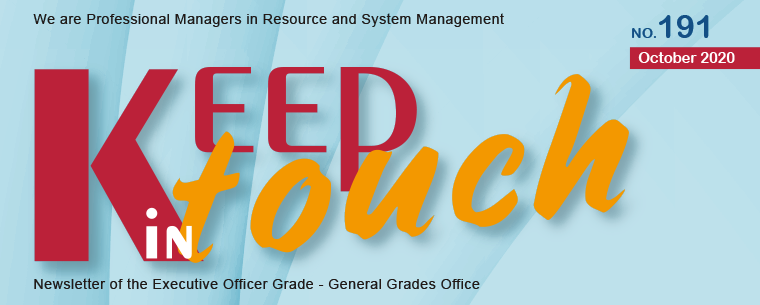|
I am Phyllis Wong from the Food and Health Bureau (FHB). I am responsible for taking forward the projects under two 10-year Hospital Development Plans as announced in the 2016 and 2018 Policy Addresses.
I attended a nine-day Management Development Program at the Hong Kong University of Science and Technology (HKUST) from September to December 2019 with over 30 other colleagues of different grades from bureaux and departments across the HKSAR Government. The Management Development Program is offered by the HKUST Business School for the HKSAR Government and related organisations. The nine-day programme covers topics of “Teambuilding and Problem Solving”, “Managerial Decision Making”, “Leadership and Change Management”, “Crisis and Stress Management” and “Negotiation”. Conducted in the form of lectures, case studies, interactive workshops, facilitated discussions, experiential learning and simulation exercises, the programme was structured to encourage participants to actively interact and communicate with each other. To be honest, I was quite anxious when I first learnt that I would be attending a formal course at the university; after all, it had been decades since my graduation from university.
Our class had a very good mix of professionals from different areas and, of course, our fellow Executive Officers (EOs). The classes were held at the Lee Shau Kee Business Building of HKUST. Situated at the prime location of the HKUST Campus, the building overlooks a 270-degree, if not 360-degree, sea view with a relaxing study atmosphere. The lecture theatre and breakout rooms are all well-equipped and comfortable, which facilitate active group discussions and collaboration.
The classes covered quite an extensive number of topics and activities, with lots of real-life examples and practical case studies. I was particularly impressed by one of the role-play exercises to illustrate how big the communication gap can be between frontline staff, middle management and senior management. Satisfactory completion of the exercise depended on how we selected the appropriate piece of information to be conveyed to others, whether we took the initiative to do so, and when we actually did it. Being typical middle management, EOs all understand only too well that we are always taking up the bridging role between requirements and the expectations of the frontline workforce and the senior management. Our unique role enables us to be given a lot of information from subordinates, counterparts and seniors, including details of frontline operations, staff sentiment, pressures of service delivery and continually changing public expectations—leading to changes in service requirements and senior management decisions. Subsequently, how we select and when we convey the information to the appropriate person make a huge difference to the end result. The exercise reminded me to be more cautious in identifying communication gaps at work and make an effort to fill those gaps with tact and flexibility to achieve a better result.
Finally, I would also like to share another interesting piece of information. I was in my previous post when I started attending this course in September 2019 and took up the current post in FHB towards the end of the course. One of my classmates has close work contact with me in my new post, and of course, he became my helpdesk hotline during the initial months of my current posting! It is always true that building up a strong network with colleagues from other bureaux and departments is beneficial to our daily work.
Augusta Chung |

